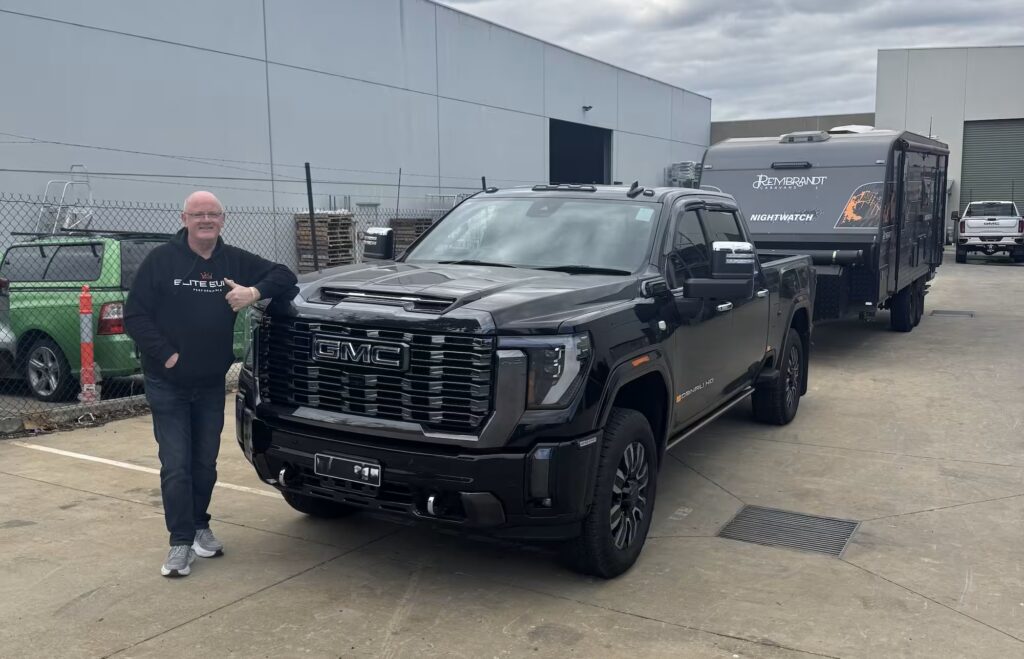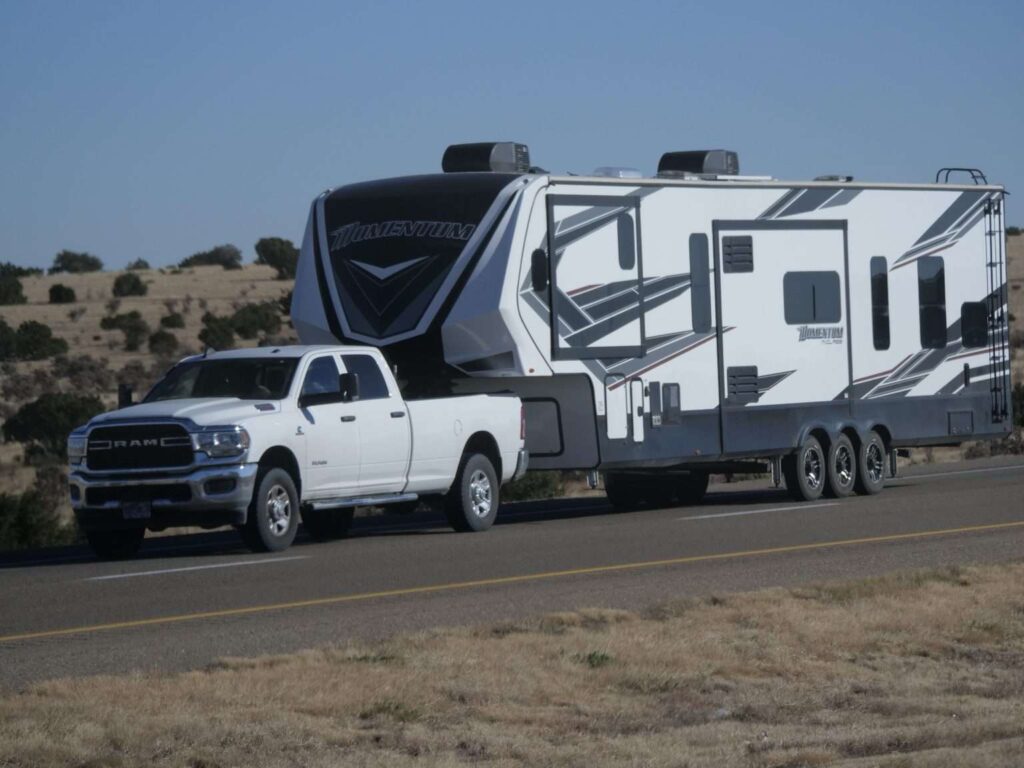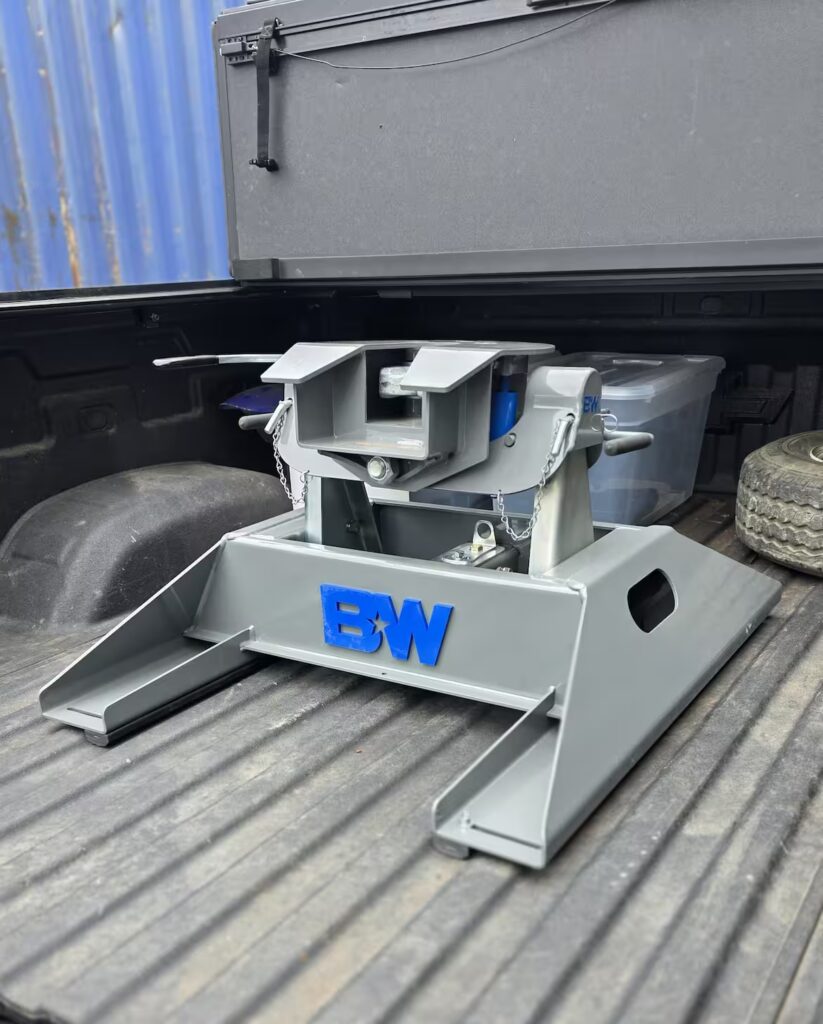Engineering Excellence from Australia’s Leading Conversion Specialists
Foreword: Three Decades of American Truck Engineering for Australia
When Autogroup International began in 1993, the Australian automotive space wasn’t ready for the level of precision required to engineer American pickup trucks for local conditions. Big American trucks were still seen as novelties – too big for city streets, too complex to meet Australian regulations, and too difficult to convert to right-hand drive without compromising safety.
Thirty-three years later, the picture looks completely different. With over 5,000 vehicles converted and delivered to Australia and customers in over 40 markets worldwide, Autogroup International has become synonymous with engineering discipline, compliance certainty, and practical towing expertise.
This guide is not a theoretical overview. It’s grounded in hands-on experience forged over decades, by teams of 250+ specialists working at our Sri Lanka facility – the world’s largest independent right-hand-drive conversion plant. We don’t just read specifications; we create engineering solutions that make towing heavy loads across Australia safe, legal, and reliable.
And make no mistake – towing in Australia is unlike anywhere else. Long, hot summers. Outback highways that stretch for thousands of kilometres without a service station. Steep mountain passes. Coastal routes vulnerable to crosswinds. Our trucks face conditions that American manufacturers never design for, but that our engineering protocols comprehensively address.
Chapter 1: The Reality of American Truck Towing in Australia
Why Towing Needs More Than Just “Big Numbers”
It’s easy to get dazzled by maximum towing capacities in glossy brochures. In fact, sales pitches often tout American pickups’ famous “up to 6,350kg towing capacity” figures. But in practice, most owners will never legally or safely tow anywhere near those numbers in Australia. Why? Because of the interaction between Gross Vehicle Mass (GVM), Gross Combination Mass (GCM), and ball weight.
We’ve lost count of the number of operators who purchased a truck only to find that towing their loaded caravan legally would either:
- Exceed their GVM,
- Overload their towball by several hundred kilograms, or
- Leave them with no remaining payload for passengers, fuel, or gear.
On paper, their truck looked unbeatable. On the scales, they were overweight before leaving the driveway.
Three Common Myths About American Truck Towing
Myth 1: “Bigger numbers equal better towing.”
Reality: Maximum capacity is a limit, not an operating target. Trucks engineered for your actual requirements—not simply largest capacity—perform better and last longer.
Myth 2: “Any licence will do.”
Reality: Licensing rules around GVM limits mean many heavy-duty US trucks require more than a standard car licence. Downgrades are possible – but only with engineering discipline to ensure safety.
Myth 3: “As long as it has the power, it can tow it.”
Reality: Engines are only one part of the equation. Suspension, braking, distribution hitches, cooling systems, and transmission strategies matter just as much.
The Australian Licensing Landscape Explained
- Standard Car Licence (Class C): Covers up to 4,495kg GVM, 9,000kg GCM. This fits most recreational towers—think caravans up to 3.5 tonnes behind half-ton or some ¾-ton trucks engineered for Australia.
- Light Rigid (LR): Required for vehicles >4,495kg GVM up to 8,000kg. This covers many heavy-duty pickups.
- Medium Rigid (MR) and Higher: Used only for specialised heavy vehicles or commercial operators.
We now counsel every potential US pickup buyer to map out their licence suitability before purchase. Buying a truck outside your licence class is not just inconvenient – it can expose you to legal penalties if caught overweight.

Chapter 2: Weight Engineering and Load Distribution
The backbone of towing safety is proper weight management. Fail to manage this, and no technology, no amount of horsepower, and no expensive modifications will save you.
Why Payload and Ball Weight Are Constantly Misunderstood
Many Australian towers focus on GCM and overlook two silent killers: ball weight and payload.
Ball weight is not optional – it is physics. Caravans and trailers must press down on the hitch to maintain directional stability. Get it too light, and you induce sway. Get it too heavy, and you overload the rear axle, compromise steering, and exceed payload instantly.
Practical Example: A 3,500kg Caravan in the Real World
Let’s run the numbers:
- Truck: 3,500kg GVM, 2,850kg kerb weight.
- Caravan: 3,200kg loaded, with a safe 12% ball weight = 384kg.
- Occupants: Two people at 68kg each = 136kg.
- Fuel: 150L total = roughly 150kg.
Calculation:
3,500 – (2,850 + 384 + 136 + 150) = -20kg.
That’s negative payload, before packing camping chairs, recovery gear, or food. In other words -an insurance liability waiting to happen.
This scenario isn’t uncommon – it’s what we see at weighbridges every week.
The Autogroup Calculation Method
We insist every customer understands:Available Payload=GVM−(Kerb Weight+Occupants+Fuel+Ball Weight)Available Payload=GVM−(Kerb Weight+Occupants+Fuel+Ball Weight)
Most operators ignore the ball weight in this calculation. That’s the single biggest contributor to non-compliance.
Chapter 3: Technology That Makes the Difference
American pickups are engineered with advanced towing technology rarely matched by Australian-market vehicles. Mirror-image engineering during conversion ensures these systems are fully retained in right-hand-drive builds – well they should be! Not all conversions are the same. This is where the engineering capability of the American truck conversion really plays out!
Integrated Trailer Brake Controllers
Unlike add-ons, these systems are factory integrated. We preserve this functionality in our conversions – critical for stability and safety. Benefits include:
- Automatic adjustment for trailer load,
- Multiple trailer profiles,
- Diagnostics that warn before failure.
Stability and Sway Control Systems
These monitor trailer motion and apply selective braking and torque modulation. In one recent incident, a customer towing a 3.8-tonne caravan outside Wagga Wagga experienced sudden gusts of 80km/h. The sway control intervened within seconds to prevent a significant rollover risk.
Engine and Transmission Programming
Tow/Haul mode provides:
- Longer gear holds for downhill braking,
- Smarter torque converter lockup,
- Heat management to preserve transmission life.
Autogroup’s role is to recalibrate these systems for Australian fuel quality, average loading scenarios, and ambient conditions.

Chapter 4: Pre-Departure Engineering Protocols
The Importance of Routine Checks
Studies show that 95% of caravan-related accidents in Australia could have been prevented through basic pre-departure checks. Yet most operators skimp.
We recommend our 15-minute system:
- Vehicle Checks: Tyre pressures, brake fluid, towbar bolts, electricals.
- Trailer Checks: Brakes, lights, tyre condition, load security.
- Paperwork: Rego, insurance policy fine print, licensing, route planning.
A trip from Sydney to Cairns may seem straightforward – but NSW imposes a 100km/h towing cap above 4.5t, while Queensland enforces trailer rego over 750kg. Fail to spot such inconsistencies, and fines, voided insurance, or roadside detainment follow.
Chapter 5: Real-World Applications
Caravan Touring
Australia has the largest and most active caravan market in the world. For caravanners:
- Long-haul travellers should prioritise heavy-duty variants (GMC Sierra 2500/3500 equivalents) with advanced cooling and suspension.
- Weekend campers often prefer half-ton pickups such as GMC Sierra 1500s and Ford F-150s for their balance of urban comfort and moderate towing needs.
- Off-road explorers require specialist suspension tuning, higher ground clearance, and electronic reprogramming for differential locks. Autogroup International provides the models applicable to the Australian requirements such as the GMC Sierra AT4 and AT4X series of trucks.
Boat Towing Challenges
Salt air wreaks havoc on electrical connections. Boat ramps demand maximum torque at low traction points. We engineer sealing and anti-corrosion adaptations that most importers ignore completely.
Commercial & Agricultural Applications
- Trades & Construction: Frequent stop-start use rapidly accelerates drivetrain wear. Maintenance protocols must be shortened.
- Agriculture: Livestock, equipment, and remote tracks strain vehicles differently to highways. We reinforce suspension and prioritise durability.
Here at Autogroup International, we work with the end user on ensuring your truck is ready to tackle your adventure!
Chapter 6: Maintenance Discipline
Towing increases component stress by up to 60%.
Key adjustments for towing operators:
- Oil Changes: Halve intervals—towing stresses oil faster due to heat.
- Transmission: Inspect at 25,000km intervals. Failures from overheating are preventable.
- Differential Fluid: Often overlooked, yet a key factor under sustained loads.
- Brakes: Increased wear means annual fluid replacements and pad inspections every service.
Case example: A Perth-based customer towing construction machinery 3x weekly saw transmission overheating warnings at 90,000km. After shifting to 25,000km Autogroup-serviced fluid intervals, issues disappeared entirely.
Chapter 7: Advanced Towing Systems—Fifth Wheel & Gooseneck
Australian caravanning is catching on to fifth-wheel trailers. These distribute pin weight directly over the rear axle, dramatically enhancing stability and capacity. But installations demand professional reinforcement of frames and alignment checks. Done right, it’s the safest and most robust towing setup available. Done poorly, it’s catastrophic. We engineer only certified systems that meet ADR standards.

Chapter 8: Emergencies and Troubleshooting
Swerving/Trailer Instability
Respond by gently reducing speed. Don’t brake harshly. Redistribute load at the next stop. Persistent issues demand proper engineering inspection.
Overheating on Outback Highways
Reduce speed, disengage air conditioning, and increase engine rpm in lower gears to promote cooling flow. Long term, auxiliary oil and transmission coolers often prove essential.
Remote Area Preparedness
Travelling across the Nullarbor? Satellite communication equipment, full recovery kits, and trailer-specific spares (like bearings and lights) are essential—not optional.
What we have learned from experience?
| State/Territory | Speed Limit when Trailering | Key Restrictions | What We’ve Learned |
| NSW | 100km/h max for >4.5t GCM | Strict enforcement on major routes | Plan routes carefully; authorities know the regulations |
| VIC | Posted limits (100-110km/h) | Heavy emphasis on load distribution | Weighbridge checks common on holiday routes |
| QLD | Posted Limits | Trailer registration mandatory >750kg | Northern routes have unique challenges |
| WA | 100km/h max for ALL towing | Most restrictive speed rules nationally | Factor extra travel time into planning |
| SA | Posted Limits | Bridge restrictions on some routes | Outback travel requires careful preparation |
| TAS | Posted Limits | Weight restrictions on some bridges | Ferry operators enforce regulations strictly |
| ACT | Follows NSW regulations | Limited heavy vehicle access areas | Most restrictive urban towing environment |
| NT | Posted Limits | Remote breakdown considerations | Carry comprehensive emergency equipment |
Conclusion: Engineering That Pays Off
American pickups unquestionably bring massive towing potential to Australia—but raw power alone cannot compensate for poor planning, bad weight distribution, or non-compliance with local laws.
Autogroup International provides more than conversions:
- 1,626-point inspection protocols
- VIN-specific compliance packs
- 33 years of practical Australian towing expertise
When you drive out with an Autogroup-engineered truck, you’re not gambling on “brochure promises.” You’re towing with proven, tested, and documented engineering solutions.
Because in Australia’s wide, hot, and unforgiving landscapes, experience isn’t optional—it’s survival.
Talk to the expert team at Autogroup International on (03) 9765 1300 and we will be able to provide expert advice or guidance!
FAQ’s
What is “payload” in pickup trucks and why is it important for towing?
Payload is the total weight a pickup truck can safely carry, including passengers, cargo, and accessories. Staying within payload limits protects vehicle performance, safety, and compliance with Australian regulations.
How do I find the towing capacity of my pickup truck?
Maximum towing capacity is listed in the vehicle’s owner manual or a label inside the driver’s door. Always refer to manufacturer guidelines and Australian standards for specific limits.
What is the difference between Gross Vehicle Mass (GVM) and Gross Combination Mass (GCM)?
GVM is the total weight of the fully loaded vehicle, including occupants, cargo, accessories, and tow ball or pin weight. GCM is the combined mass of the vehicle and any trailer with its load. Both must be observed for safe, legal towing.
Can I drive with both maximum payload and maximum towing capacity?
Operating at both maximum payload and towing capacity is not recommended. Doing so can exceed legal weight limits and compromise safety and compliance. Must not exceed the GCM of the vehicle.
How can I check that my loaded vehicle and trailer comply with Australian towing laws?
Use a certified weighbridge to ensure neither the fully loaded vehicle nor the combination with a trailer exceeds GVM, GCM, and axle load limits. Regular checks before trips are advised for safety and legality.
What does “ball weight” mean and why does it matter?
Ball weight (tow ball down weight) is the force exerted by the trailer onto the vehicle’s tow ball, generally around 10% of the loaded trailer’s weight. Proper ball weight ensures balanced handling and prevents axle overload.
What should I consider when towing on unsealed roads or off-road?
Towing on unsealed or rough terrain increases risk to vehicle mechanical parts and safety. Manufacturer limits are set for sealed roads; on unsealed roads, drive cautiously, stay below weight limits, and confirm balanced weight distribution.
When do I need a specialist licence for towing heavy pickups or trailers?
A standard Australian car licence covers driving most light vehicles up to 4,495 kg GVM. Vehicles above this require a heavy vehicle licence, and towing combinations exceeding 9 tonnes may need a Light Rigid licence.
What specifications should my tow ball meet under Australian standards?
Tow balls should comply with the relevant Australian standard (typically AS4177-2), with a 50mm diameter and rating up to 3,500 kg for trailers up to 3.5 tonnes. Capacity and manufacturer details must be stamped on the tow ball. Normally 50mm hitch uses tow up to 3500 kg and 70mm hitch to tow up to 4500 kg, but always follow the instructions on owner’s manual for each model.
When must air brakes be installed for towing?
Air brake systems are required for trailers or caravans, including fifth-wheel and gooseneck types, that exceed 4.5 tonnes in loaded mass.
When is a trailer brake controller necessary?
Any trailing unit over 750 kg aggregate mass must be equipped with brakes. Trailers with electric brakes need a controller installed in the towing vehicle to ensure proper synchronized braking
Are towing regulations the same across all Australian states?
Australia has national regulations for trailers up to 3,500 kg loaded mass, but some details differ by state. It’s essential to stay informed of both national and local rules for legal towing.
How does weight distribution affect towing safety?
Balanced weight distribution across axles is crucial for safe operation of the vehicle and trailer. Imbalances can increase ball weight, risk overload, and cause loss of control.
What technologies help improve towing safety and ease?
Many modern pickups feature towing aids such as tow/haul mode, trailer brake controllers, hill start assist, and exhaust braking to support safe and comfortable towing.
Where can I find towing-related information for my specific vehicle?
Consult the owner’s manual and compliance label for official specifications, or speak with the team at Autogroup International or state authority for the most up-to-date advice.
Are aftermarket towing accessories and modifications advisable?
Choose only ADR-approved towing accessories. Aftermarket options may compromise your vehicle’s engineering integrity, warranty, or compliance
How do I measure payload, GVM, GCM, and ball weight accurately?
Utilise a certified weighbridge to measure the loaded weight of your vehicle and trailer, including all cargo and accessories. This ensures compliance with legal and engineering limits.
What courses or resources are available for towing best practices in Australia?
Accredited towing safety courses provide valuable training in vehicle and trailer management. Refer to state road authorities and manufacturer guides for regulatory updates and best practices.

